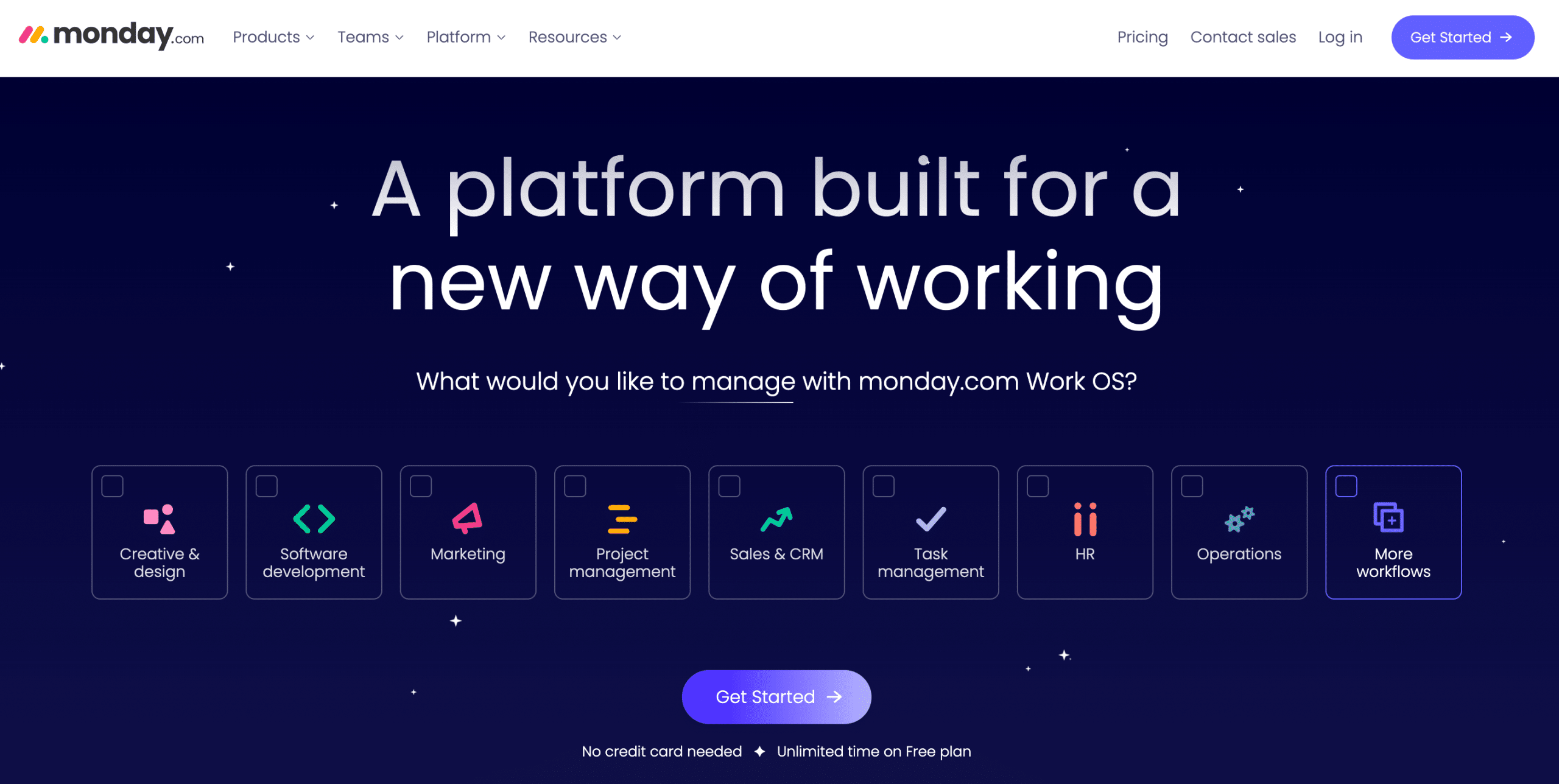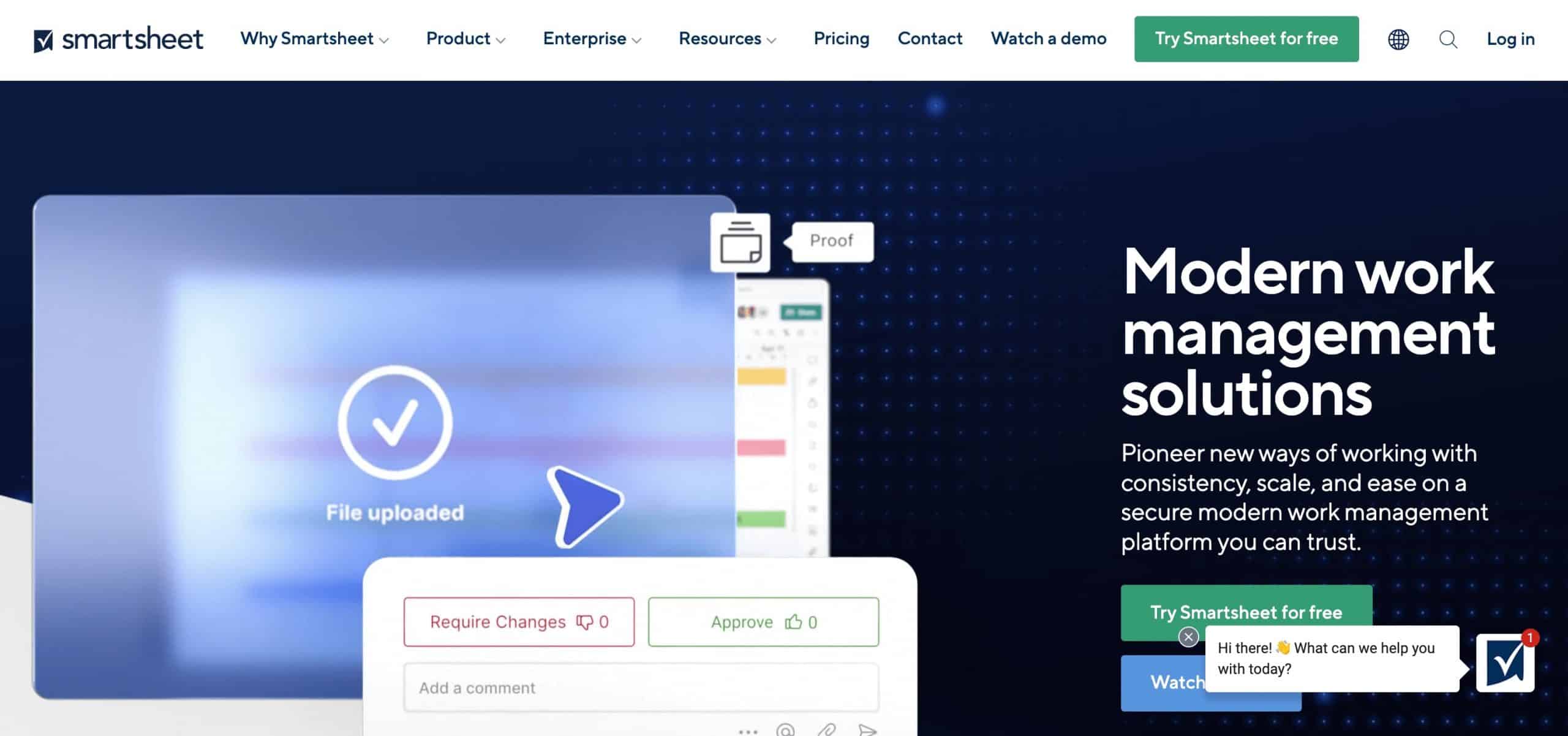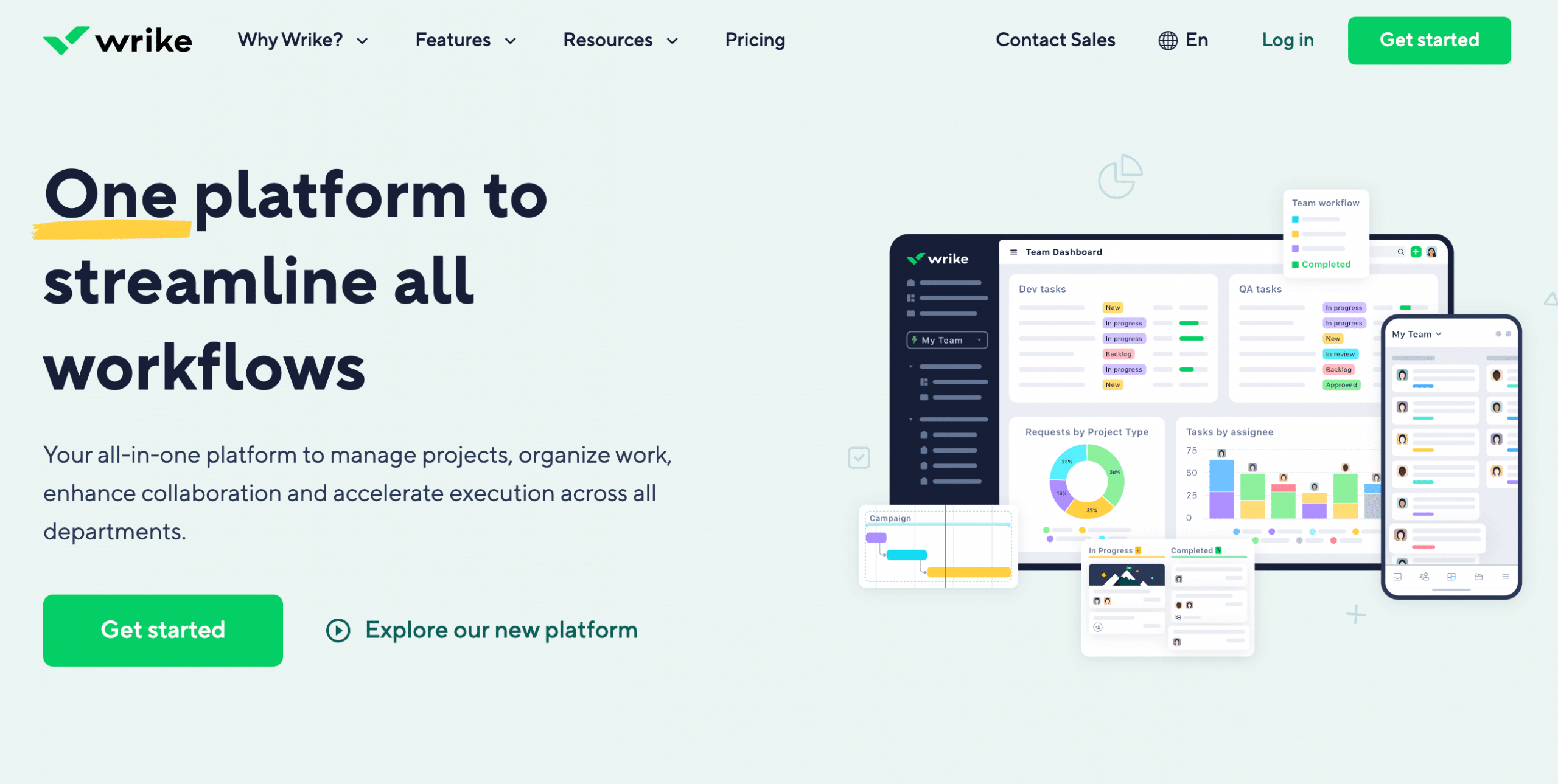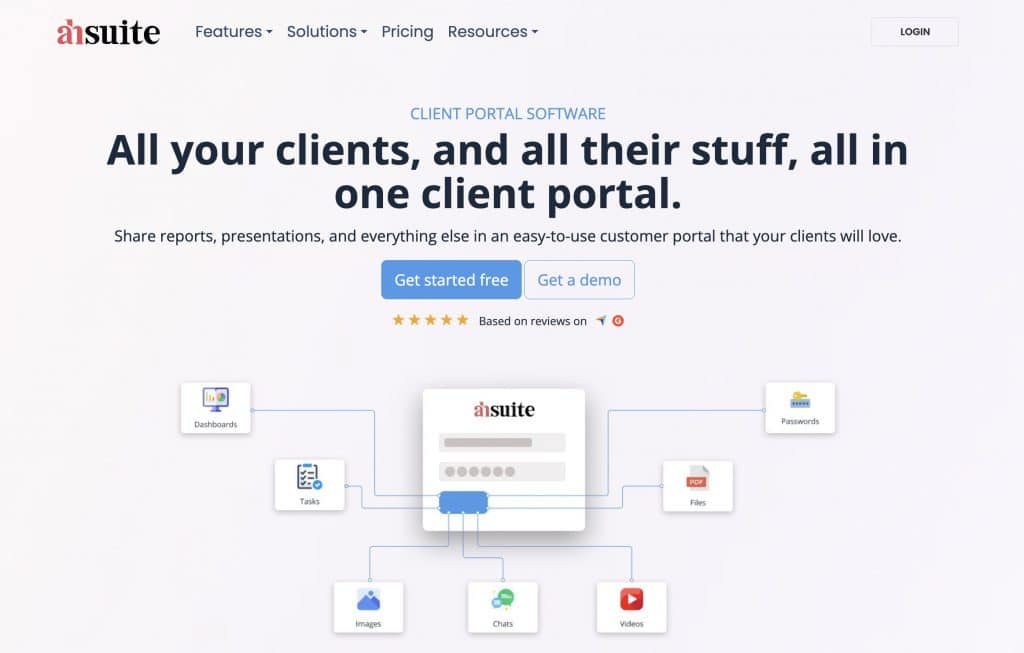Managing tasks and projects efficiently is key to staying organized and meeting deadlines. Workload management tools help teams plan, track progress, and ensure work is shared fairly.
With features like task tracking, time management, and reporting, these tools make it easier to handle day-to-day tasks and collaborate with others. Whether you’re working on a small project or leading a large team, the right tool can make a big difference in keeping everything on track.
Below, we look at some of the best tools available, their strengths, and how they can help you manage your workload.
Top Workload Management Tool Features
When choosing a workload management tool, there are a few key features that make a tool truly effective. These features ensure that the tool helps your team stay organized, work efficiently, and achieve their goals. Here’s a closer look at the most important aspects to consider:
Ease of Use
An effective tool should be straightforward and user-friendly. A clean, intuitive design helps team members quickly learn how to use the tool without extensive training, making it easier for everyone to get started and stay productive.
Task Tracking
The tool should simplify the process of managing tasks. It should allow you to create tasks, assign them to team members, and monitor their progress. Clear visibility into deadlines and task statuses helps keep everyone organized and on track.
Customization
Customization is key to fitting the tool to your team’s specific needs. The ability to adjust task displays, workflows, and dashboards ensures that the tool aligns with how your team works, making it more effective for your unique projects.
Collaboration
Good collaboration features are essential for teamwork. The tool should enable easy communication, file sharing, and joint work on tasks, helping team members stay connected and work together seamlessly.
Reporting & Analytics
Strong reporting and analytics capabilities are crucial for tracking project progress and team performance. The tool should provide insightful reports and data that highlight achievements, identify issues, and support informed decision-making.
Best Workload Management Tools in 2024
1. Trello

Trello stands out for its simplicity, offering a Kanban-style system that allows users to visually manage tasks by moving cards across different stages of a workflow.Users can create boards to represent different projects, add lists for task stages (like “To-Do,” “In Progress,” and “Completed”), and create cards for individual tasks. Cards can be assigned to team members, tagged with due dates, and enriched with attachments and comments. One of Trello’s key strengths is its flexibility, allowing users to add “Power-Ups” such as calendar views, automation rules, and third-party integrations to extend functionality.
2. Asana

Asana excels in task management and project tracking, providing robust tools for planning, assigning, and monitoring work. It allows users to create tasks and subtasks, assign deadlines, and visualize project progress using timeline (Gantt) charts. What makes Asana particularly effective for workload management is its ability to handle task dependencies, allowing users to mark tasks that are blocked by others and ensuring that no one works on something out of sequence. Asana also features a “Workload” view that gives managers an overview of team bandwidth, helping to prevent overloading specific team members.
3. Monday.com

Monday.com is a highly customizable project management tool with features that cater to teams of all sizes. Its primary strength lies in its flexibility—teams can tailor workflows to their specific processes by creating custom dashboards and setting up automation rules. For example, teams can automate repetitive tasks like status updates, ensuring smoother project execution. Additionally, Monday.com has built-in time tracking, which is great for monitoring how long tasks are taking and managing team availability. The platform’s workload management features allow for easy visualization of each team member’s current tasks, preventing overallocation.
4. ClickUp

ClickUp is an all-in-one platform that provides task management, time tracking, and workload views, making it an excellent choice for teams needing customizable workflows. ClickUp’s hierarchical structure allows teams to organize projects, tasks, and subtasks in a way that mirrors their organizational needs. This flexibility extends to the platform’s multiple views, including lists, Kanban boards, calendars, and Gantt charts, which provide users with different perspectives on their work. ClickUp also offers goal tracking, which ties tasks to larger project milestones, and detailed reporting features that give managers insight into team performance.
5. Smartsheet

Smartsheet combines the familiarity of spreadsheets with the power of project management, making it ideal for teams that prefer spreadsheet-based workflows. Users can track tasks, resources, and timelines in a format that feels familiar to Excel users but with enhanced capabilities such as Gantt charts, task dependencies, and collaboration tools. Smartsheet’s strength lies in its ability to manage complex, resource-heavy projects, with advanced reporting and resource management features that allow users to allocate team members and track their availability.
6. Wrike

Wrike is a highly versatile project management tool that shines in resource and workload management. It offers detailed workload charts, time tracking, and task prioritization features, which give managers a clear view of team capacity and help them distribute tasks accordingly. Wrike also excels in analytics, providing advanced reporting features that can help teams track progress and identify bottlenecks. With integrations with over 400 other tools (such as Salesforce, Microsoft Teams, and Slack), Wrike can be deeply embedded into a company’s existing workflow.
7. Teamwork

Teamwork is specifically designed for client-based teams and agencies, with features that extend beyond project management to include billing and invoicing. In terms of workload management, Teamwork offers resource allocation tools that allow project managers to see which team members are available and assign tasks accordingly. It also has built-in time tracking, which can be used to generate client invoices based on the time spent on tasks. This combination of project management and financial tracking makes Teamwork a great tool for agencies working on multiple client projects simultaneously.
8. Jira

Jira is the go-to tool for agile software development teams, offering features specifically designed for tracking sprints, backlogs, and bugs. Jira allows teams to create tasks, assign them to sprints, and track progress through detailed reporting features like burndown charts and velocity reports. Its flexibility in managing workflows through Scrum or Kanban boards makes it perfect for teams that follow agile methodologies. The tool’s backlog prioritization feature ensures that development teams are always working on the most important tasks.
9. Basecamp

Basecamp is a simple, easy-to-use project management tool that is particularly popular among remote teams, startups, and small businesses. It organizes projects into to-do lists, message boards, and schedules, making it easy for teams to track tasks and communicate. Basecamp’s group chat feature, Campfire, allows teams to have quick conversations without relying on external communication tools. While it lacks some of the advanced features found in tools like Asana or Monday.com, such as workload views or advanced reporting, Basecamp’s simplicity is also its strength—teams looking for a straightforward, low-maintenance tool will appreciate its ease of use.
10. Notion

Notion is one of the most versatile tools on this list, offering an all-in-one workspace where teams can manage tasks, take notes, create databases, and collaborate. Its flexibility allows users to create customized workflows, including Kanban boards, task lists, and calendars, as well as databases to manage content or knowledge. Notion’s collaborative features allow teams to share pages and documents, making it a great tool for both project management and knowledge management.
11. Ahsuite

Ahsuite is a client portal software with powerful project management tools. It allows you to embed videos, dashboards, and various applications directly in the client portal, making it easy to share and view important information. The platform simplifies document handling with features to request files and e-signatures. It also includes a password manager for securely sharing passwords with your team and clients. The work journals feature helps you keep detailed, timestamped notes of work done, which is great for tracking progress. You can efficiently manage tasks with its task manager, which lets you assign, track, and complete tasks. Additionally, Ahsuite centralizes all your client and team communications, making collaboration more organized and effective.
Conclusion
Workload management tools help teams stay organized and on track by making it easier to manage tasks and deadlines. They offer features like task tracking, automation, time management, and reports to help teams work better together. Some tools are easy to use and great for simple tasks, while others have more advanced features for handling bigger or more complex projects. Choosing the right tool can make a big difference in keeping your team efficient and productive.
